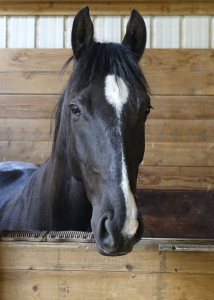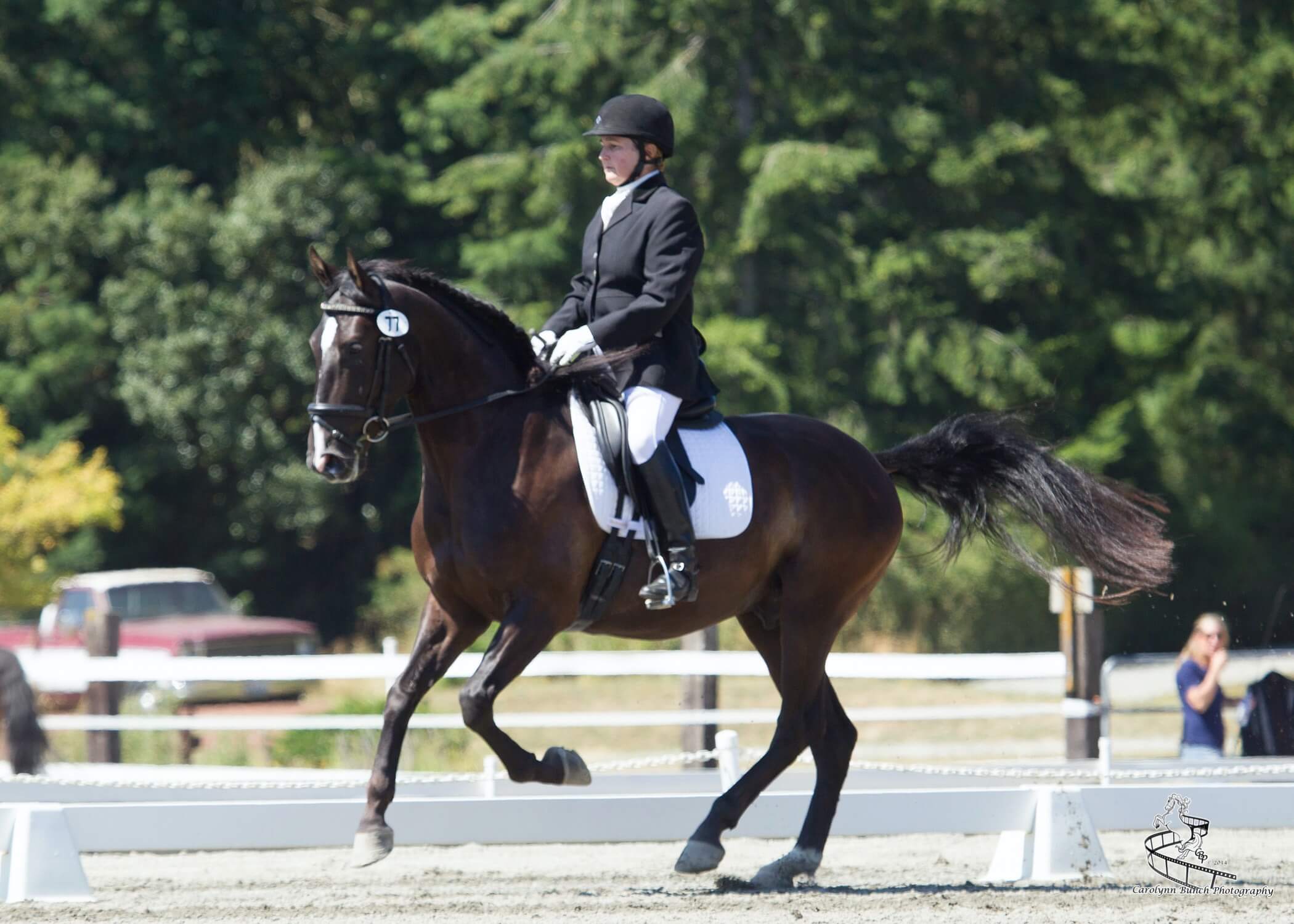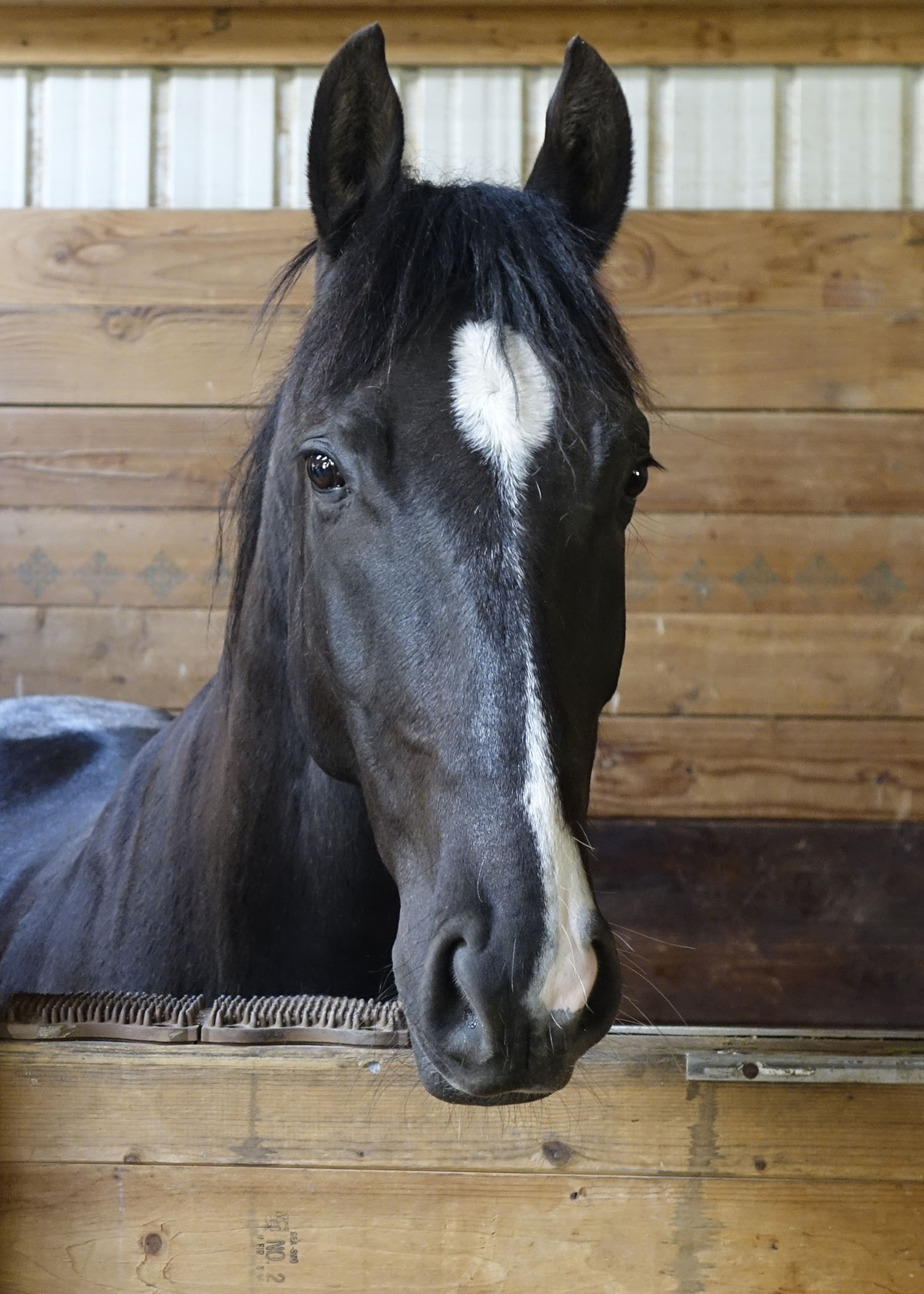Engage Your Dressage Horse with an Exciting New Discipline
by Kim Roe
 Most horses, like most people, need a job that has a clear beginning and a clear end. This clarity brings the horse mentally and physically into the game we are playing and includes sports such as cutting, roping, eventing and jumping. While the discipline of dressage is very good at teaching horses to become more maneuverable, light, attentive and supple we need a way to show our horses “the point.” Many horses are happiest when putting their skills to a practical use. As an avid dressage rider, trainer and competitor, I strongly believe our horses need a break from endless hours in the “sand box.” This can be accomplished with a trail ride, but what about learning a new and exciting equestrian discipline like working equitation?
Most horses, like most people, need a job that has a clear beginning and a clear end. This clarity brings the horse mentally and physically into the game we are playing and includes sports such as cutting, roping, eventing and jumping. While the discipline of dressage is very good at teaching horses to become more maneuverable, light, attentive and supple we need a way to show our horses “the point.” Many horses are happiest when putting their skills to a practical use. As an avid dressage rider, trainer and competitor, I strongly believe our horses need a break from endless hours in the “sand box.” This can be accomplished with a trail ride, but what about learning a new and exciting equestrian discipline like working equitation?
Working equitation was developed in four countries: Portugal, Spain, France and Italy. Its purpose is to showcase the abilities and traditions of horses that are used on the ranch and in the field. The first international competition was held in 1996. The World Association for Working Equitation (WAWE) was developed in 2004 to govern the sport internationally. Competitors compete in the traditional dress of their country, and can ride any breed of horse. In the United States we are just beginning to have competitions, but interest is growing fast. There are two main organizations in the United States: Working Equitation International Association U.S.A. and The United States Working Equitation Association (USAWEA). The first organization, (WEIAUSA), is modeling their rules and competitions after the World Association for Working Equitation, and continuing with the traditions of the sport as practiced in the international community. We have an active community of WEIAUSA affiliates in Washington, Oregon, and California. Look for the Washington and Oregon chapters on Facebook. The USAWEA is almost identical to WEIAUSA, without as much emphasis on following the lead of the international community. Both groups organize clinics, schooling shows and competitions and both have excellent and informative websites. Working equitation, like dressage and eventing, has a progression in the competitions from simple to more difficult. These “levels” will be discussed in more detail in a future article.
I first witnessed working equitation when a friend returned from a horse shopping trip to Brazil and showed me a video of a competition that she had attended while there. I was fascinated, especially by the control and agility exhibited by the horses in the speed phase of the trial. The horses were doing something similar to our trail horse class, but at top speed. The riders rode with one hand on the reins, and the horses were uphill, collected, highly maneuverable and obedient. They would gallop up to a gate, stand quietly while the rider opened it, calmly back through, close it, and then race off to the next obstacle. At one point the horses came to a complete stop while the rider picked up a water glass and then carried it to a post and placed it there. They also maneuvered through poles and around barrels, cantered through a “cage” of farm animals, jumped a small jump, and skewered a ring with a pole, among other things. They used the dressage skills of flying changes, half-passes, pirouettes, shoulder-in and of course leg-yielding.
What really got my attention was when my friend explained that this competition involved four phases, or tests, spread out over a number of days, and that the first day was a dressage test. The Brazilian horses and riders were doing excellent dressage, and the tests resembled something very close to the Prix St. George level. The second phase is the same trail course I described above, but ridden more slowly and judged on smoothness and accuracy. This phase is called “ease of handling.” The third phase is called the speed trial. In some larger competitions there is a fourth phase involving the herding of cattle. My curiosity got me interested enough to start investigating. There are many wonderful YouTube videos of working equitation. I became excited about this sport because I had grown up riding trail horses and working cow horses, but left those pursuits behind to train dressage horses. Now there is a discipline that brings them all together.
My young Lusitano, Exodus, is a horse that requires a clear job. Working equitation is one way to keep him fresh and energized, giving purpose to the dressage work. I will be introducing him to the sport and look forward to sharing our progress with you. Dressage work lays the perfect foundation for the other phases of working equitation so next month we will begin there.

Kim Roe grew up riding on the family ranch and competed in Western rail classes, trail horse, reining, working cow, and hunter/jumper. She trained her first horse for money at 12 years old, starting a pony for a neighbor.
Kim has been a professional dressage instructor in Washington state for over 30 years, training hundreds of horses and students through the levels. In recent years Kim has become involved in Working Equitation and is a small ‘r’ Working Equitation judge with WE United.
Kim is the editor of the Northwest Horse Source Magazine, and also a writer, photographer, and poet. She owns and manages Blue Gate Farm in Deming, Washington where she continues to be passionate about helping horses and riders in many disciplines.






